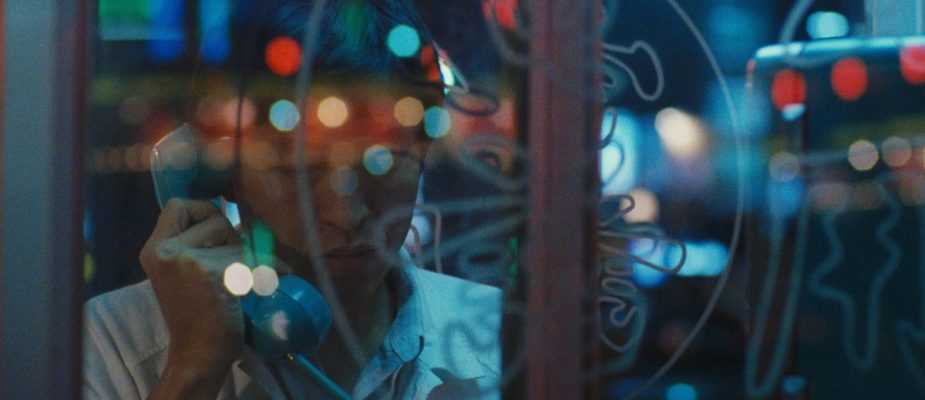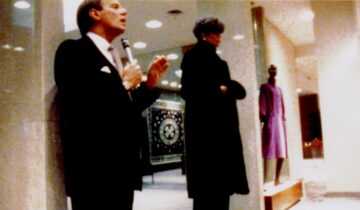Around the mid-1980s, Asia began to emerge as a significant rival to Europe in the production of art cinema of the highest quality. In the Middle East, Iran witnessed the emergence of a new generation of post-Revolution filmmakers led by the comparatively experimental work of Abbas Kiarostami, who got his start before the Revolution, and by the younger, socially conscious, Mohsen Makhmalbaf; in Mainland China, the “Fifth Generation,” the first graduating class of the Beijing Film Academy after the Cultural Revolution—Chen Kaige, Zhang Yimou, and Tian Zhuangzhuang—adopted new perspectives on the country’s recent and more distant past; and in neighboring Taiwan, a small group of directors completely eschewed their country’s martial arts legacy in favor of a new realism that engaged directly with the historical impact of the Chinese Revolution and the rapid modernization of the era. While Iran produced one of the late 20th century’s greatest filmmakers in Kiarostami, and China could claim the highest profile international successes, such as The Last Emperor (1987) and Raise the Red Lantern (1991)—even if the Fifth Generation quickly lost much of its artistic relevance—Taiwan and the New Taiwanese cinema would prove, in many respects, the most consequential of the three national cinemas in the decades to follow. Beyond introducing no fewer than three directors to challenge Kiarostami for the title of world’s best (Hou Hsiao-hsien, Edward Yang, and later on, Tsai Ming-liang), the New Taiwanese Cinema or Taiwanese New Wave was the movement that most successfully adopted and transformed the codes of postwar European Modernist art cinema, creating a body of work that would rival and in many instance surpass that of the young directors’ heroes, Michelangelo Antonioni, Jean-Luc Godard, and Werner Herzog.
Edward Yang’s (1947-2007) Taipei Story (1985) was one of the catalyzing achievements of the New Taiwanese Cinema. Co-written by the film’s director Yang, friend and fellow filmmaker Hou Hsiao-hsien (A Time to Live and a Time to Die, The Assassin), and novelist and playwright Chu Tien-wen, Taipei Story explores the Antonioniesque breakdown of a love affair before the neon and steel backdrop of the rapidly transforming Asian metropolis. Yang’s film opens with office-worker Chin (Chinese pop star and Yang’s wife at the time, Tsai Chin) and her boyfriend Lung (Hou), a former baseball player, as they examine Chin’s empty new apartment. Chin’s off-camera footsteps give way to a two-shot of the couple, each standing before a separate pane of a sliding glass door, as the film first fades in. Yang presents each from behind, in the manner of Antonioni, and again, alone, as they stand side to side without facing each other. Chin soon moves into a second, empty frame, before calling out to an off-screen Lung that they could set up her bedroom so that he could watch video tapes from bed. They both continue to circulate alone through the Western-style apartment—Lung pauses briefly to mimic the swinging of a bat—with Yang’s camera frequently shooting through the space’s series of thresholds, mapping a space that will encourage the couple to be alone as much as they are together. Indeed, Yang’s careful revelation of architecture space in the film’s opening scene showcases the filmmaker’s novelistic sensibility in which accumulated spatial detail and character emotion pass between each other in every carefully constructed frame. The exterior he describes are also the characters’ interiors, while the spare details of dialogue—the VCR, Lung’s upcoming trip to the States—subtly prefigure the incidents and objects that will hasten their breakup before the film’s bitter conclusion.
Following the subsequent credit sequence scored with cello by the director himself, we rejoin Chin in the high-rise corporate setting of her dead-end desk job; Yang quickly reverses to shoot his female lead, dressed in a full-shouldered, pin-stripped suit, as she speaks on her phone behind a highly reflective plane of glass. The image is no less than an emblem of the city’s burgeoning modernism, as is the young Chin herself—pretty, fashionable, alienated, and adrift as she negotiates a distant boyfriend and workplace infidelity. (Lung, in an exquisitely reserved performance by the great director Hou, is for his part the archetypal impassive and emotionally withholding male.) Following a brief flashback to a construction site, itself descriptive of Taipei’s constant pace of transformation during this mid-1980s period of breakneck economic growth, Yang’s characters come to circumnavigate another high-rise space, even as Chin’s new male companion observes that he is no longer able to distinguish the buildings he has built from those that have been appearing elsewhere in the Taipei skyline, a vast urban space of endless iteration (one that proves indistinguishable from Los Angeles, as Lung observes following his trip to America). Taipei Story is a lyrical and melodramatic cousin to Jacques Tati’s modernist architectural burlesque in Playtime (1967), right down to the clogged motorways spied from overhead and the revolving glass doors that flicker in bright Taiwanese sunlight. If Tati uncovered the comic inhumanity of the sanitized new architectural style, Yang sees both the superficial beauty, painted in glowing neon, and also the modern alienation in which the international style is complicit, having following its infectious spread to the East.
Chin’s move, she later confesses, was an attempt to free herself from her father, a ne’er-do-well whom Chin and Lung are forced to help, against his daughter’s wishes, after gets himself in serious financial trouble with underworld types. In the persons of Chin’s parents (her mother is long-suffering), their two daughters, and Lung, Taipei Story stages a generational conflict that is as relevant to the film’s title as are the skyscrapers that redefining the skyline—and the global capitalist economy that Chin and her younger sister most of all come to embody. And again, architecture serves to tell this story with Chin’s parents occupying a more traditional-style space in a poor, and poorly lit corner of the sweltering city. When she tells her father the news of her move, he observes that “times sure have changed, an unmarried daughter moving out”—a Western style apartment, one might add, which transmits her values and the new moral and psychological territory that her post-Chinese Revolution generation is set to explore. Yang’s film is not only about the new built environment of Taipei, but of the new social relations and mores of the Taiwanese capital (which these spaces serve).
Taipei Story, in all these ways, is a work of novelistic precision, a film in which the settings and details of the narrative confer the larger meaning. It is also a film that opens itself up to the sort of meaningful digression that the Italian Neorealists first had introduced in the years immediately following the Second World War. The most memorable of these moments are the dance and sing-along to “Footloose,” led by Chin’s younger sister Ling, and the small, wind-up Pepsi can toy that the latter places on the desktop. After setting it in motion, Yang cuts in to a mobile close-up of the small toy walking across the laminate as Chin and Ling laugh off frame. Eventually, it gets caught on a stack of dusty old books, loosing steam in a moment that, on the one hand, belongs only to itself, to pure spectacle, and on the other, to an new economy that would produce such a frivolous object—and an one that would eventually lose steam in the same fashion. For now, Taipei Story shows the international modernist style, borderless capitalism, and a deemphasis on family and new liberal morality that were was familiar in the West in 1985 as they were in a rapidly changing East. Yang’s masterpiece is the film of this global moment.
Taipei Story was restored by The Film Foundation’s World Cinema Project at Cineteca di Bologna/L’immagine Ritrovata laboratory in association with the Cinémathèque Royale de Belgique and Hou Hsiao-hsien, and screens twice at OKCMOA on Thursday, May 11 at 5:30 and 8 pm. For tickets or more information click here.










